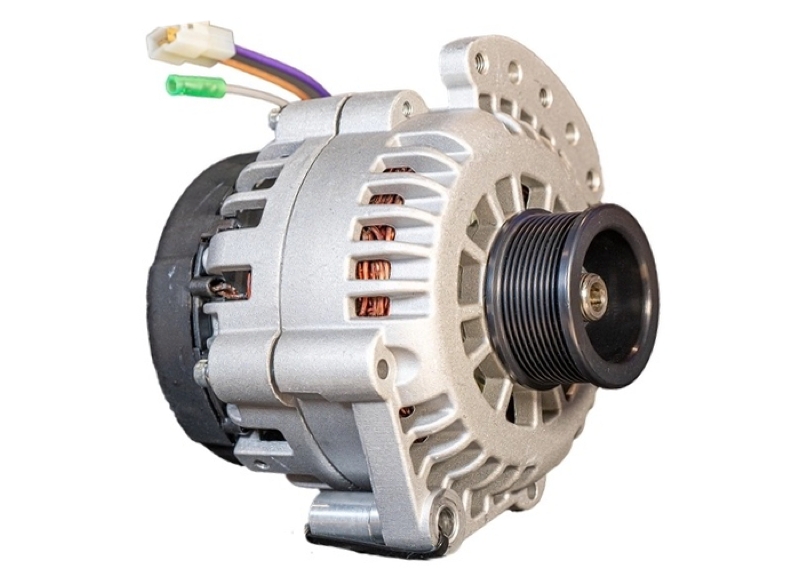
Built to Withstand the Elements & Power the Open Water
Marine-grade alternators are purpose-built to operate in the harsh, high-moisture environment of marine vessels — offering superior resistance to corrosion, vibration, and temperature changes. These alternators are essential for keeping your boat’s battery banks charged and ensuring that vital systems like navigation, bilge pumps, lighting, refrigeration, and communication electronics run reliably.
Whether you’re powering a commercial fishing boat, a recreational yacht, or an off-shore work platform, a marine alternator is not just a luxury — it’s a necessity for safety, reliability, and performance.
⚓ Why Marine Alternators Are Different
Standard automotive alternators aren’t equipped for the high-humidity, saltwater exposure, or continuous load found in marine environments. Marine alternators include specific enhancements that make them ideal for boats and watercraft:
- Salt-Resistant Coatings
- Sealed Internal Components
- Spark Protection (Ignition-Safe)
- Heavy-Duty Bearings for Continuous Load
- Designed for Dual Battery Charging or House Loads
These features ensure long-term durability and help reduce the risk of electrical failure while at sea.
⚙️ Key Features & Technical Specs
| Feature | Marine-Grade Alternator Specification |
|---|---|
| Output Range | 70A – 250A+ |
| Voltage Options | 12V and 24V systems |
| Idle Charging | Many models offer high idle amps for slow trolling speeds |
| Cooling | Internally fan-cooled or externally cooled for better airflow |
| Mounting | Direct bolt-on for marine engines (Volvo Penta, MerCruiser, Yanmar, etc.) |
| Corrosion Resistance | Epoxy coatings, anodized housings, sealed internals |
| Safety Certifications | SAE J1171 or ISO 8846 compliant (ignition protected) |
🛥️ Ideal Use Cases
- Sailboats with navigation equipment and autopilot
- Fishing boats with trolling motors, fish finders, and sonar
- Yachts with refrigerators, AC systems, and entertainment systems
- Houseboats and liveaboards with multiple battery banks
- Marine work vessels with hydraulic, lighting, or winch systems
✅ Benefits of Upgrading to a Marine-Grade Alternator
- Increased Safety: Ignition-protected to prevent spark in enclosed engine bays
- Reliable Charging: Supports high-demand electronics without battery drain
- Dual Battery Support: Some models feature built-in isolators or external regulation
- Long-Term Durability: Withstands continuous use in damp or salty conditions
- Peace of Mind: Reduces failure risk far from shore
⚠️ Installation & Considerations
🔧 Wiring Must Be Marine-Grade
Use tinned copper wire, sealed connectors, and proper fusing per ABYC marine electrical standards.
🔋 Voltage Regulation
For multi-bank setups, consider external smart regulators for temperature-based charging.
🛠 Pulley & Mounting Compatibility
Ensure alternator matches your marine engine’s mount points and belt system (v-belt or serpentine).
🌊 Regular Maintenance
Even with corrosion-resistant coatings, regular inspection for salt buildup and ventilation is essential.
🔋 Summary: Power You Can Count On — Offshore or Docked
A marine-grade alternator is more than an upgrade — it’s essential marine equipment. Designed for safety, reliability, and long-term endurance, these alternators ensure you can rely on your boat’s power system in every condition, from calm lakes to stormy seas.
With their robust construction and waterproof design, marine alternators are tailored for those who demand power — wherever the water takes them.


